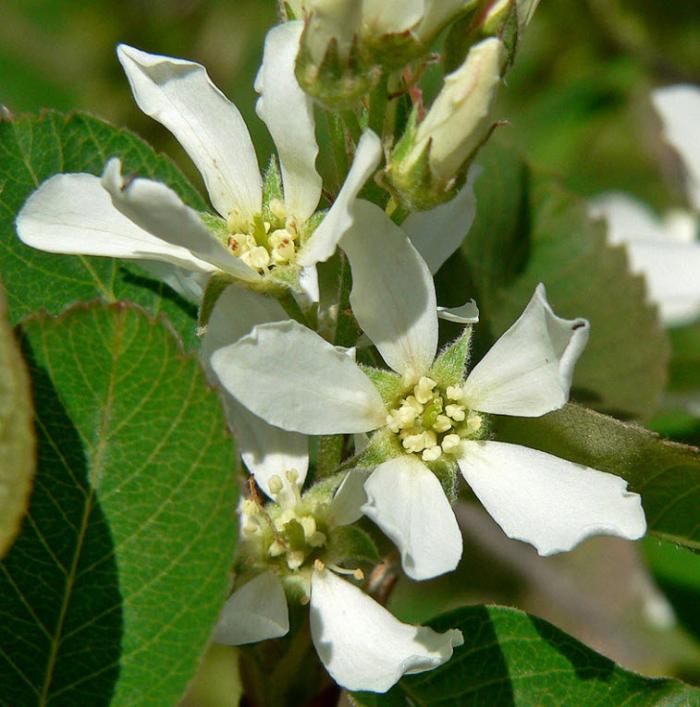| Botanical Name: Amelanchier utahensis | |
| Common Name: Utah Serviceberry |

-
Anatomy
-
Culture
-
Design
Plant Type
Shrub
Height Range
6-12'
Flower Color
White
Flower Season
Spring
Leaf Color
Green, Light Green
Bark Color
Grey
Fruit Color
Black, Blue
Fruit Season
Summer
Sun
Full, Half
Water
Low
Growth Rate
Moderate, Slow
Soil Type
Sandy, Clay, Loam, Rocky, Unparticular
Soil Condition
Average, Rich, Poor, Well-drained, Dry
Soil pH
Acid, Neutral
Adverse Factors
n/a
Design Styles
Meadow, Mediterranean, Ranch, Spanish, Native Garden, Woodland
Accenting Features
Fall Color, Fragrance, Multi-trunk Tree, Showy Flowers, Specimen
Seasonal Interest
Spring, Summer, Fall
Location Uses
Background, Shrub Border, Foundation, Walls / Fences
Special Uses
Erosion Control, Hedge, Screen, Mass Planting, Naturalizing
Attracts Wildlife
Birds, Butterflies
Information by: Stephanie Duer
Photographer:
Photographer:
-
Description
-
Notes
This serviceberry is more shrub than tree. It grows 10 to 12 feet tall and about 8 to 10 feet wide, with an upright and rounded form and a suckering habit. Leaves are light gree and hairy; fall color is reddish yellow. White spring flowers are followed by edible blue-black fruit. Bark is smooth grey. Well suited to a shrub border, a natural garden, or the foundation, when a taller plant is warrented. A Utah native.
Grow in sun to part shade; ideally with a south, west, or east exposure. Grows in well-drained soil and perfers those with some organic matter. Tolerates alkaline soils to 7.5 pH. Root suckers are common and if not removed, will result in a dense, shrubby habit, which is not necessarily a bad thing. Attractive to bees, butterflies, and birds. A Utah native, found drier, rockier, and hotter habitats than other serviceberry.